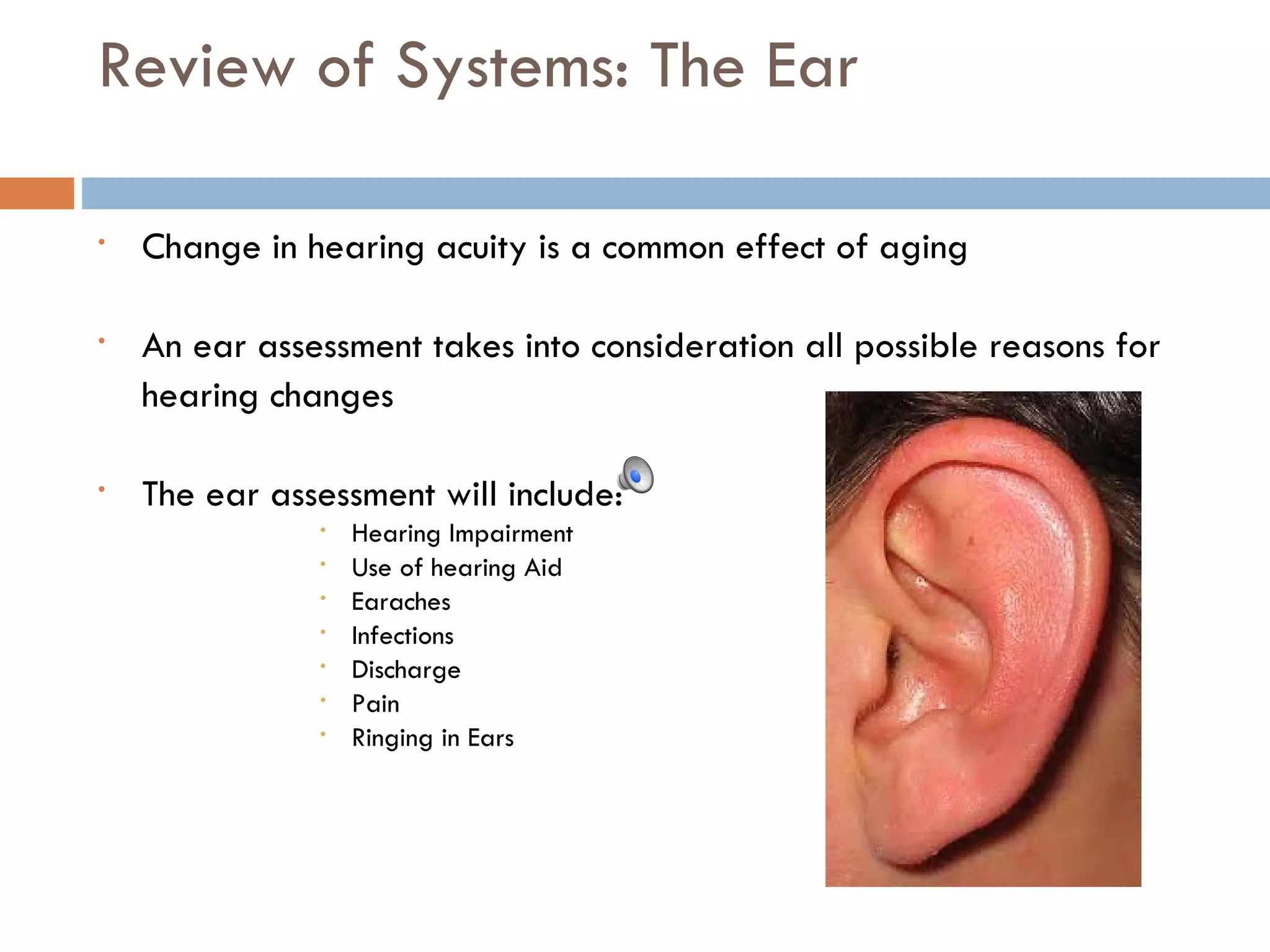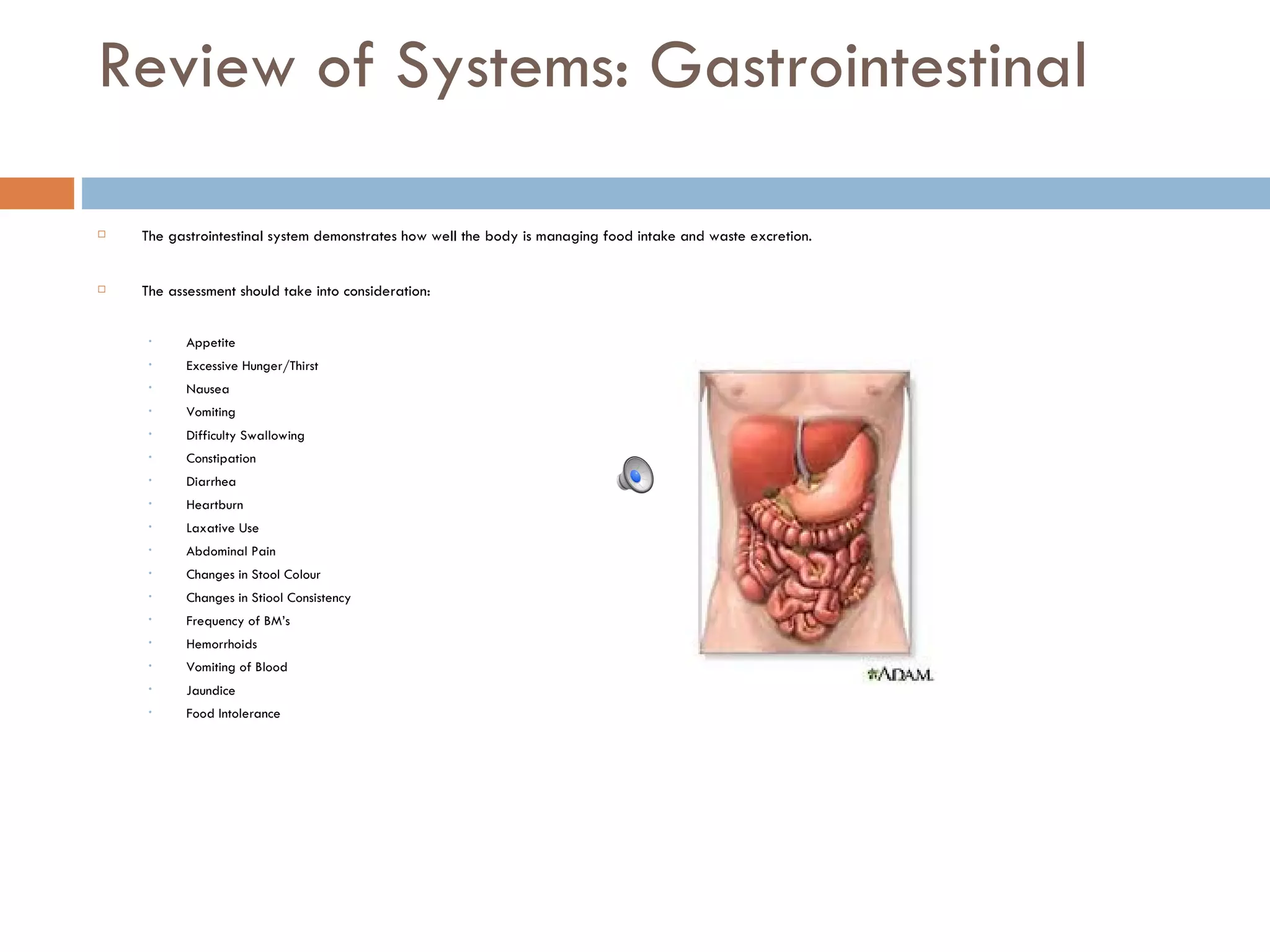The document provides an overview of proper interviewing and health history taking techniques for assessing clients. It discusses factors that may affect a client's participation, different interview stages and techniques, components of a health history, and how to conduct a review of systems by examining different body systems. The goal is to gather comprehensive subjective and objective health information to inform an accurate initial assessment.


























